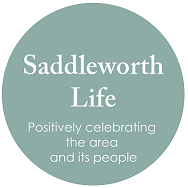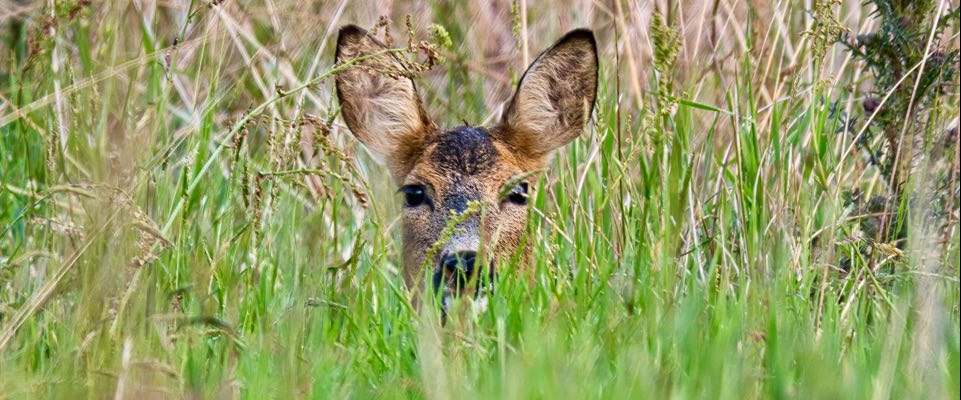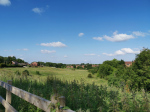Roe Deer in the Saddleworth Borderland
In the dawn’s early light / in the biggest snow of the year / Two blue-dark deer stood in the road, alerted…
Situated between the urban sprawl of Greater Manchester and the glowering moors of the Peak District National Park, Saddleworth has long been a place where wildlife frequently encounters the strange world of people. A borderland, of sorts, where all is not quite civilised, nor wholly wild…
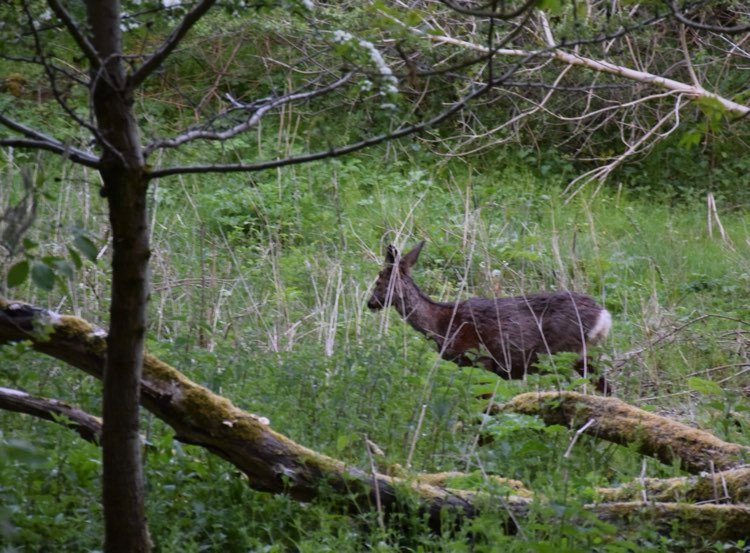
Many a furred creature – be it badger, fox, hare, stoat, hedgehog, or deer, to name but a few – will have momentarily halted their midnight wanderings to gaze down upon a Saddleworth valley aglow with orange streetlamps blotting the darkness like otherworldly flowers. Some will even make their homes in the woods and scrub betwixt our homes, as close as the bottom of the garden. Yet so cunning is their wildness and so keen their fear of what we as people, their foes, can wreak upon their way of life, seldom are they ever truly seen. Only by chance, it seems, do they permit us the slightest glimpse.
They had happened into my dimension / The moment I was arriving just there…
Recently, my sister and I were permitted such a glimpse while walking our dog in the snow. We’d just reached the top of Spring Hill in Delph (better known as Heights) and, despite the worsening conditions, had decided to extend our journey up Broad Lane towards the Broadhead Noddle. We were passing Heights church when three grey deer leapt onto the road ahead. They cleared the lane in two graceful springs and were into the fields beyond in a heartbeat, proceeding to bound swiftly through the snowfall towards Denshaw, disappearing over the horizon before our dog had the sense to bark.
They planted their two or three years of secret deerhood/ Clear on my snow-screen vision of the abnormal…
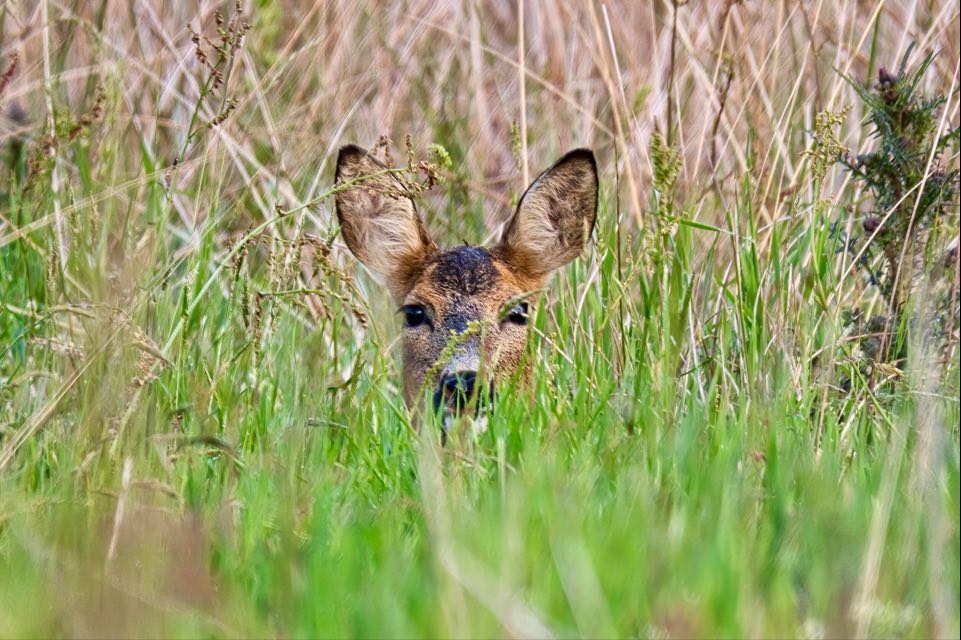
I later identified them as ‘Roe Deer’ (Capreolus Capreolus). A medium-sized, relatively common species of deer known to inhabit forests and the edges of woodlands. Roe Deer can be recognized by their bright, rusty red coats that turn a slate-grey in winter. The males, called bucks, have short antlers like primitive spearheads that can have up to three prongs depending on age. Both males and females have little or no tail and a distinctive white rump – which was the last thing we saw disappearing over the hill as they ran. The whiteness eventually indistinguishable from the steadily falling snow…
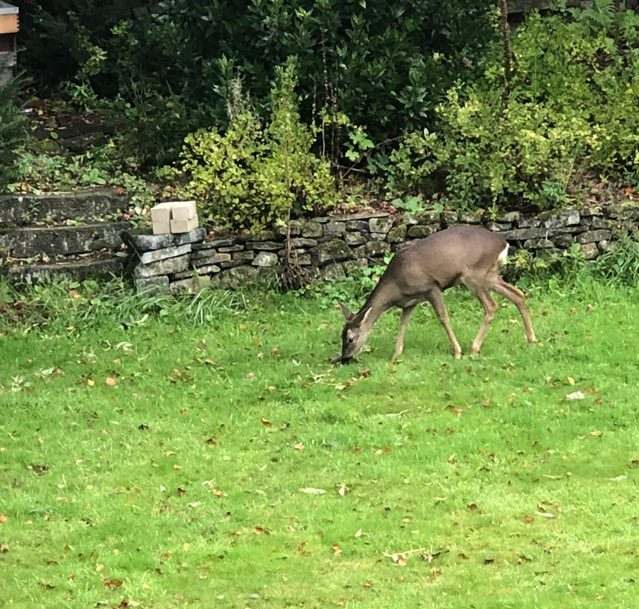
Roe deer are one of Britain’s truly native species, with records of their activity in this area dating back over 10,000 years. This aligns them with some of our oldest mythology; those of the Celtic god, Cernunnos (The Horned One) and the medieval, ‘Herne the hunter’. These were antlered gods of the wild, nature, the hunt, the chase, and fertility, who were worshipped in this country before Christianity. Their deer-featured symbols are prominent throughout history, from the antlered man depicted on The Gundestrup cauldron to references in Shakespeare’s plays.
And so for some lasting seconds/ I could think the deer were waiting for me/ To remember the password and sign…
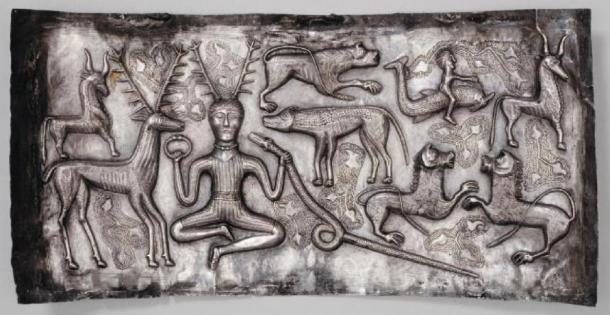
In more recent times, Roe Deer have been celebrated by poet Ted Hughes. In his poem, ‘Roe-Deer’, the poet details a brief encounter with the animals, through which he expresses the idea of two converging worlds. We stumble into the deer’s dimension through a fleeting glimpse, the moment leaving us with a powerful sense of privilege and a deeper connection to nature.
…the curtain had blown aside for a moment/ And there where the trees were no longer trees, nor the road a road/ The deer had come for me…
His notion of two worlds converging puts me in mind once again of Saddleworth’s position as a borderland between nature and suburbia. A place where wild and ancient deer wander freely between our gardens, interrupting our walks, enchanting our reality with a whisper of myth and magic. The sight indeed is a privilege; one which seemingly grows more common as the years go on and local sightings, as well as nation-wide deer populations, continue to rise.
Then they ducked through the hedge/ and upright they rode their legs/ Away downhill over snow-lonely field/ Towards tree dark…
Finally.
Patrick Bell
Poem Credit: Roe-deer by Ted Hughes
